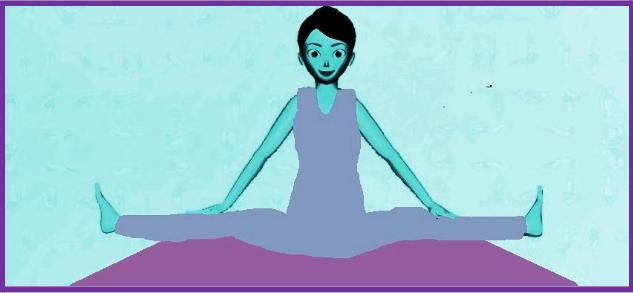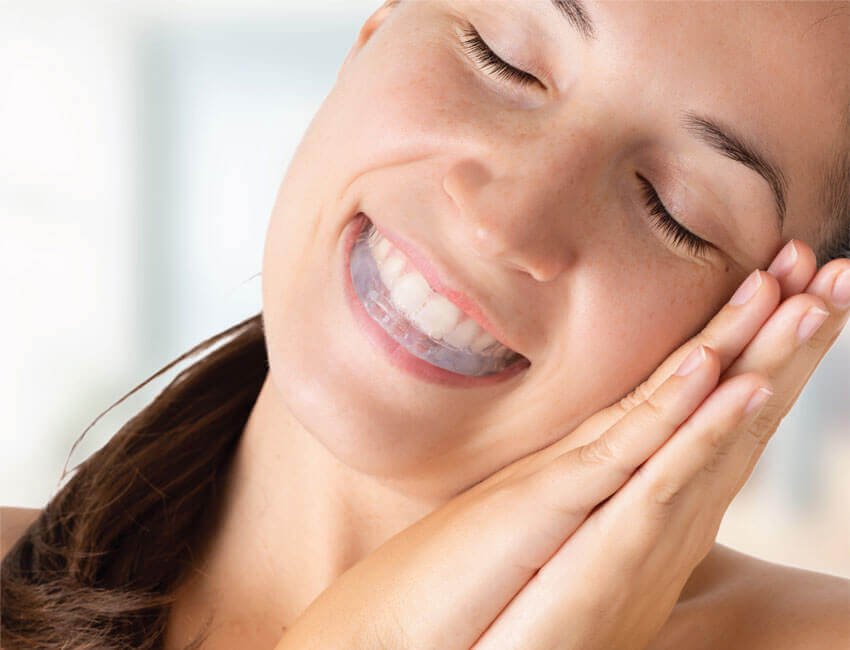What is Samakonasana (Center Splits Pose) and its Benefits? Samakonasana or center split pose is a right angle pose, the practitioner assumes the straight angle in the seated position whereby both legs are stretched sideways to be in a straight line. As a full split with the legs spread apart, it is a deep hip opening pose in which the legs form a straight angle from the center. This is an advanced seated pose that requires considerable flexibility in the hips, groins, and legs. The Samakonasana is great in (Join our yoga school in Rishikesh) terms of flexibility in your leg joints, ankles, backs, lower backs, etc. While the posture is great for your back, it is also great for your hip bones and hamstrings. While stretching your most tense muscles, you will also feel more productive throughout the day. Samakonasana is a great practice for your physical and mental health in the long run.
Samakonasana primarily opens up and stimulates the Muladhara Chakra – the Root Chakra and the Anahata Chakra – the Heart Chakra. An open root chakra (Muladhara Chakra) will provide you with the inner strength and stability you need to grow. An open heart chakra (Anahata Chakra) allows you to feel love and compassion. Samakonasana practice also promotes forgiveness and openness to accepting yourself and others. Samakonasana is also known as a straddle split in English.
What is Samakonasana (Center Splits Pose)
Samakonasana the term is derived from the Sanskrit Language, which forms from three Sanskrit words: sama, kona, and asana which means are as follows:
- Sama – straight or equal
- Kona – angle
- Asana – pose or posture
Samakonasana is Pronunced as: saa-maa-kaun-ash-ana.
Samakonasana is a typical yoga asana but you can master it with regular practice and patience. Be sure not to stretch your legs beyond their capacity while doing it. This posture has several benefits that make it unique. Samakonasana is a great way to relieve daily stress and gain a balanced spectrum, it can easily be done in the comfort of your home.
We often don’t realize it, but our emotions can become an obstacle on the path to the flexible functioning of our hips. This asana provides these body parts with the necessary space. Practicing Samakonasana will help (Join our yoga teacher training in Rishikesh) open up the hips and help the lower back perform better. Abductors need to be flexible too, and Samakonasana is just the right asana for all this.
Benefits of Samakonasana (Center Splits Pose)
There are several benefits to the single posture of Samakonasana, making it unique.
- Calms the Mind
- Good for Children
- Increase Body Balance
- Stimulates Muladhara Chakra
- Better Digestion
- Relief Stress
- Strengthens Back
- Stretches Body
- Help in Sciatic Pain
- Improve Posture
- Boost Hormones
- Improves Blood Flow
- Stimulates Abdominal Organs
- Relief Pains
- Calms the Mind
As we practice Samakonasana we become aware of tight, flexible, and stretched muscles, while also practicing to coordinate our breath. It is incredibly rewarding to reach our goal, and then deepen by holding the posture longer and longer.
- Good for Children
The posture is very good for growing children since it promotes flexibility and stretches the body to its fullest.
- Increase Body Balance
As we reach Samakonasana, the inner thighs, upper thighs, hips, and pelvic floor muscles are stretched, allowing us to achieve a balanced body. A strong and flexible hip joint eventually leads to a balanced body.
- Stimulates Muladhara Chakra
Samakonasana activating our Muladhara chakra will help to ensure a firm and grounded sacrum. When we open our Muladhara chakra, we will allow prana to freely flow through and around the body.
- Better Digestion
Samakonasana is an excellent posture for better digestion and better functioning of your lower abdomen.
- Relief Stress
Practicing Samakonasana can be relieved stress and mental health can be improved with this pose. Consequently, it reduces stress and anxiety by stimulating the nervous system.
- Strengthens Back
Practicing Samakonasana strengthens your hip joints, lower back joints, etc. It also improves the flexibility and strength of all muscles in the thigh by stretching them all.
- Stretches Body
Practicing Samakonasana stretches out your hip muscles and groins and opens up your hips and groins.
- Help in Sciatic Pain
In conditions such as lower back (Join our 200 hour yoga teacher training in Rishikesh) pain and sciatica, Samakonasana tones up the sacral and lumbar regions of the spine.
- Improve Posture
Practicing Samakonasana facilitates the hip and leg rotators stimulate the inner thigh muscles, stretches and straightens your spine as well as improves your posture.
- Boost Hormones
Practicing Samakonasana boosts your hormones and balances them.
- Improves Blood Flow
Practicing Samakonasana increases blood flow to the abdomen and reproductive organs.
- Stimulates Abdominal Organs
As Samakonasana improves blood flow to the abdomen, it nourishes and revitalizes the different vital organs of the body, especially the lower ones.
- Relief Pains
Practicing Samakonasana not only strengthens your back but also helps you get rid of back pain. People who suffer from excessive neck pain should Practice Samakonasana daily to improve their condition. All kinds of pain in the hip joints will be eliminated.
How To Do Samakonasana (Center Splits Pose)
How to do Samakonasna or center splits pose includes the beginner’s tips, preparatory poses, stepwise procedure, duration, how to release from the pose, variations or advance poses, precations, and contradictions. Be cautious not to overextend yourself while stretching your legs in Samakonasana. With regular practice and patience, you can master Samakonasana. So, let’s start with beginner tips for Samakonasana.
Beginners Tips for Samakonasana (Center Splits Pose)
Here are some of the beginner’s tips for Samakonasna or center splits pose you should keep in mind while performing Samakonasana are as follows:
- Samakonasana should be practiced on an empty stomach or 5-6 hours after eating your last meal.
- The best time for practicing this yoga is generally dawn or dusk.
- In the beginning, a full split is difficult. Don’t overstretch.
- Whenever you feel pain or discomfort, stop splitting. Regular practice will lead to a full split.
- In the case of improperly performed Samakonasana, the performer may experience acute pain in her hip joints or knee joints.
- In Samakonasana, Separate your legs to either side, but don’t stretch yourself too far.
- Beginners who are (Join our 300 hour yoga teacher training in Rishikesh) not able to make a full split may place their hands on the floor adjacent to the sides of the body until they can make a full split.
Preparatory Poses for Samakonasana (Center Splits Pose)
As Samakonasna or center splits pose is somewhat challenging for most of us, it is essential to practice deep simple stretches along with some deep intense stretches before practicing it. So, here are some of the preparatory poses that are compulsory to do before practicing Samakonsa to provide deep stretches for the inner thighs and the knees are as follows:
- Siddhasana – Accomplished Pose
- Prasarita Balasana – Wide Child’s Pose
- Baddha Konasana – Bound Angle Forward Bend Pose
- Titli Asana – Butterfly Pose
- Ananda Balasana – Happy Baby
- Surya Yantrasana – Compass Pose
- Skandasana – Side Lunge Stretch Pose
- Upavistha Konasana – Seated Straddle Pose
Steps for Samakonasana (Center Splits Pose)
Now we move to the steps for performing Samakonasna or center splits pose correctly to avoid getting injured are as follows:
- Sit in a Dandasana on a yoga mat.
- Now, Breathe Normally: split both legs out in a ‘V’ position as wide as you are comfortable.
- Flex the feet with toes pointing upward.
- Lift the torso up and out of the hips
- Ensure that your torso, neck, and head are straight.
- Close your eyes.
- Now, place your hands on your knees.
- Breathe Normally: don’t lean forward.
- Keep the position as long as it is comfortable. This is Samakonasana.
DURATION: Beginners should hold the Samakonasana for 30 to 60 seconds. Gradually, this can be increased to 3 to 5 minutes.
Release from Samakonasana :
After holding the Samakonasna or center splits pose as per your time now it’s time to release from the pose. Below are the steps to release from Samakonasana are as follows:
- Now, slowly bring your legs forward and stretch them.
- Now, you have returned to the Dandasana or staff pose.
- Take a deep breath and relax.
Follow-Up Poses of Samakonasana (Center Splits Pose)
Here are some of the follow-up poses or counterposes of Samakonasna or center splits pose you should perform after performing the (Join our 500 hour yoga teacher training in Rishikesh) Samakonasana are as follows:
- Setu Bandha Sarvangasana – Bridge pose
- Chakrasana – Urdhva Dhanurasana
- Matsyasana – Fish Pose
- Pashchimottanasana – Seated Forward Bend
Precautions and Contraindications for Samakonasana (Center Splits Pose)
Below are some precautions and contradictions for Samakonasna or center splits pose to keep in mind before performing Samakonasana are as follows:
- Samakonasana is not recommended if you have back pain.
- If you have a slipped disc problem, avoid Samakonasana.
- Women who are pregnant should avoid Samakonasana.
- It is necessary to practice Samakonasana under the guidance of a professional if you have leg problems.
- Health conditions such as sciatica, sacral or lumbar issues, and knee injuries should also be considered before attempting this posture.
Advance Poses or Variations of Samakonasana (Center Splits Pose)
Here, some of the variations or advanced poses of Samakonasna or center splits pose are as follows:
- Straight Right Angle Pose – Samakonasana is also a term sometimes used for a standing posture known in English as a straight right angle pose. In this version, stand with feet together and raise arms overhead, then, bends forward until the hips form a 90-degree angle with the thighs and the body forms an “L” shape.
- Upavistha Konasana (Wall Straddle Pose): In this version, place your hips as close to the wall as comfortable, whilst keeping your lower back in a neutral position (as shown in the below picture). Using a wall as a prop is an excellent way to improve hip flexibility as well as leg flexibility.
- Samakonasana Prep Against Wall (Straddle Split Pose Prep Against Wall): In this version, face the wall, keep your feet on the wall; press towards the wall in your max stretch, put your hands above head on the wall, move hips closer to the wall. Wall uses props to make poses more accessible to students who may not have the strength, flexibility, or balance to perform the same poses on their own.
- Samakonasana Prone Variation Wall (Prone Straddle Split Pose Variation Wall): It is an advanced-level yoga pose. In this version, Sit upright on the ground in a straddle position. Lean forward and spread your legs as wide apart as possible on the wall. Put your hands on the ground for support and fold forward flattening your torso like a pancake on the ground
.



